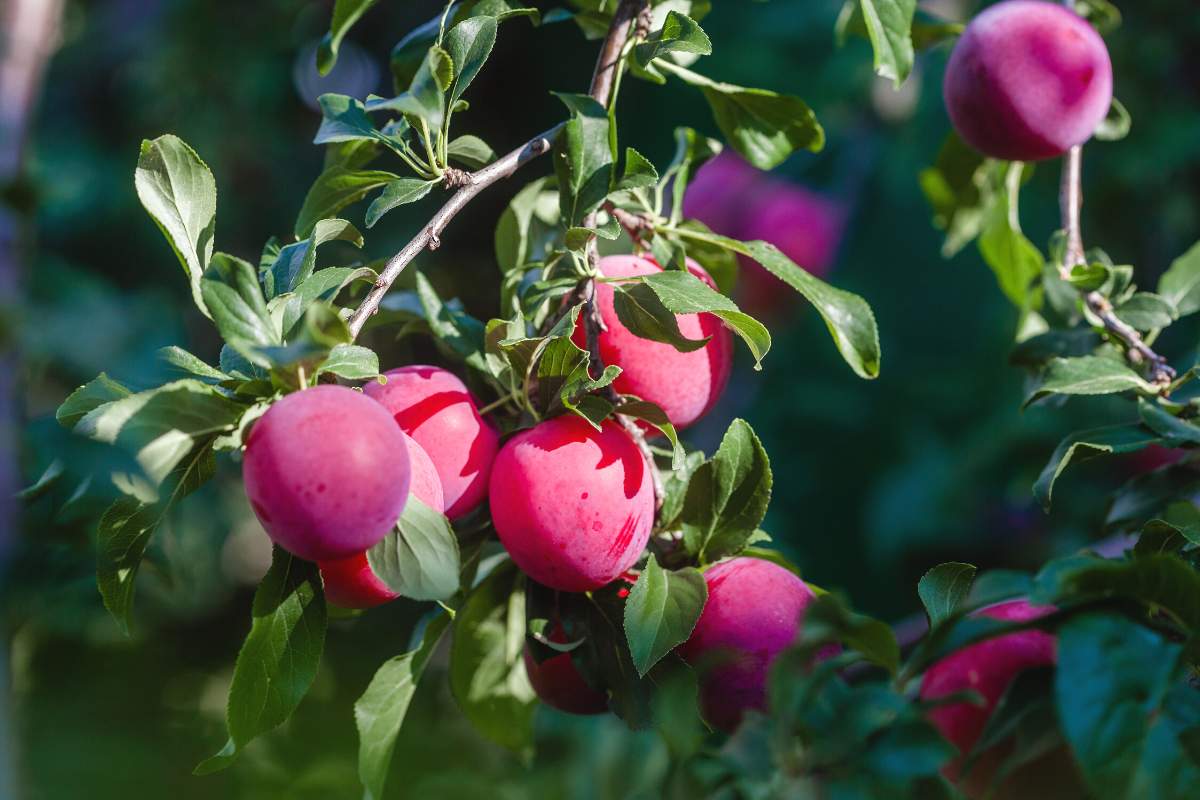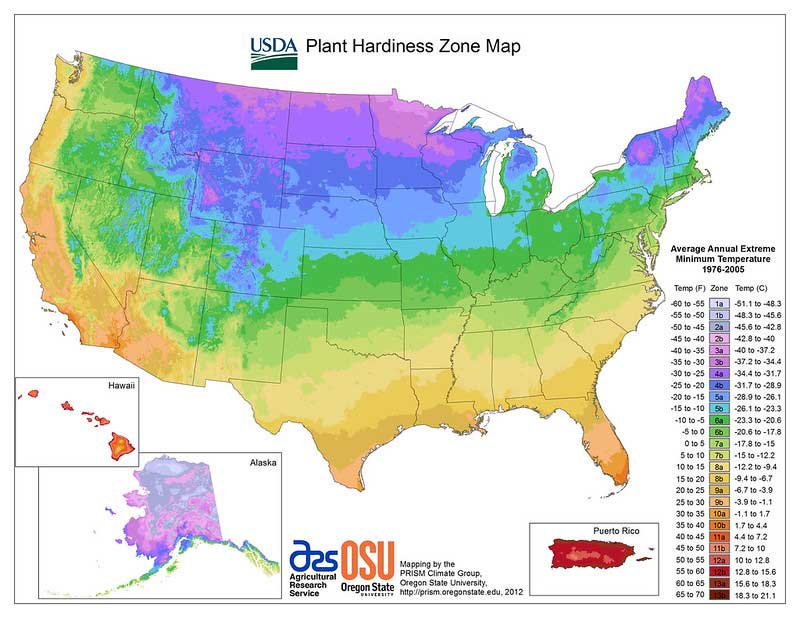Zone 5 is a zone of the United States that generally covers the Northeastern United States to the northern part of the Central US. It extends to 32 states and has sand, clay, silt, peat, chalk, and loam types of soil. This zone also has mild winters and very hot summers, which allows many plants to thrive, including fruit trees. This article will give you an overview of some of these fruit trees for zone 5 as well as some information about them.
Before we look at a list of fruit trees that grow well in zone 5, here’s a map of the planting hardiness zones in the United States, separated by color to give you a better idea of the region of the United States zone 5 is.
14 Types of fruit trees for zone 5
1. Apricot
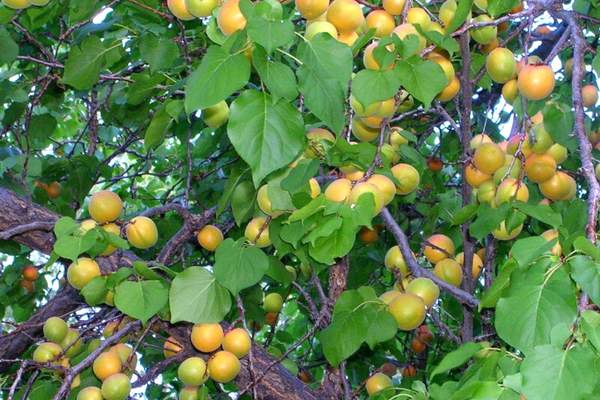
Scientific Name: Prunus armeniaca
The apricot tree produces fruit best in USDA zones 5 to 8. This tree is simple to care for, but it does have some requirements. It requires plenty of water, sunlight, and well-drained, lighter soils to thrive.
The tree begins producing fruit in its third to fourth year of growth and can live for 40 to 150 years. Apricot trees bloom from May to July, depending on where you live, but they typically bear fruit in the summer.
2. Mulberry
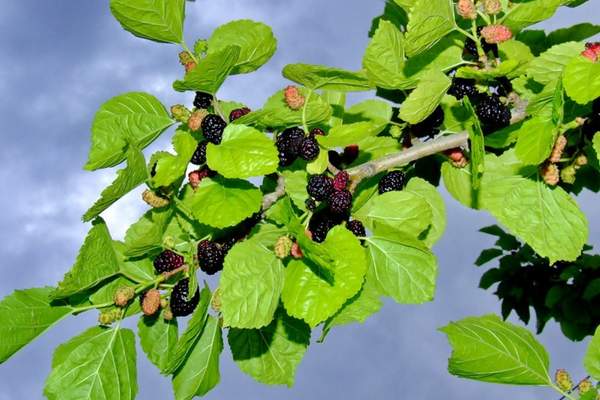
Scientific Name: Morus alba
The mulberry tree can grow up to 30 feet tall, and it has dark green leaves and produces flowers in late spring or early summer, producing fruit that ripens in late summer or early fall. The fruit is red or purple when fully ripe and has a sweet flavor.
Mulberries are native to Asia and Europe, but they’ve been cultivated all over the world for their delicious fruit and stunning foliage. They require full sun and well-drained loamy soil, but will tolerate some shade.
3. Paw Paw
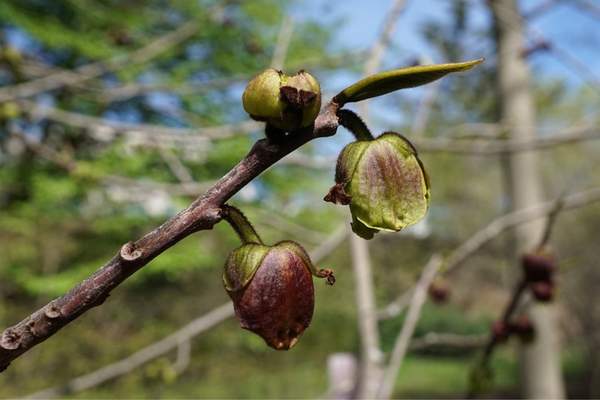
Scientific Name: Asimina triloba
The paw paw tree bears fruit and grows best in USDA zones 5 to 8. The paw paw plant can grow up to 25 feet tall and has lovely flowers that smell like fermenting grapes. This tree’s fruit begins to ripen in late summer and reaches its peak in September and October.
The tree grows best in slightly acidic soils, but it can also thrive in heavy soils. Grafted trees can produce fruit in two to three years, whereas seedlings can take up to ten years.
4. Cherry
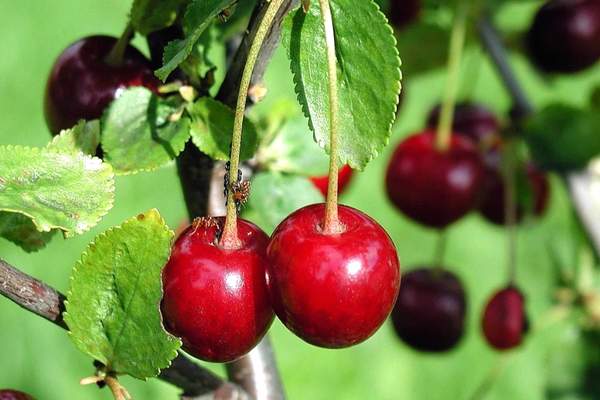
Scientific Name: Prunus avium
Cherry trees are among the fruiting trees that thrive in USDA Zone 5. These trees are deciduous, which means they shed their leaves in the winter. They also bear large, fragrant flowers that develop into cherries.
These beautiful trees require full sun as well as deep, well-drained soil. It would be best if you planted them in sunny, well-ventilated areas. They also take about four years to begin producing fruit and can be seen blooming in March or April.
5. Peach
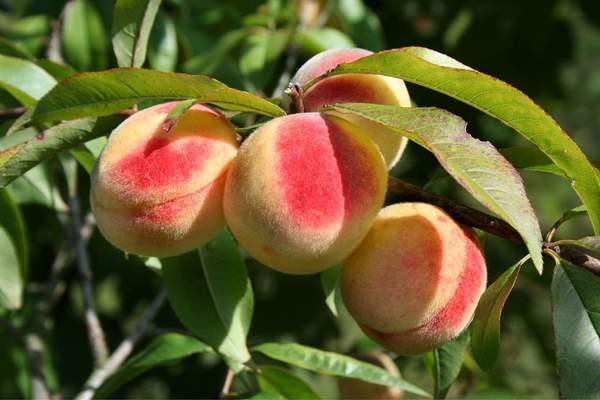
Scientific Name: Prunus persica
Peach trees are popular for their delicious, sweet fruit. They do best in USDA zone 5, but can be grown in other parts of the country with some adjustments. The trees’ flowers are cream or pinkish and appear in early spring.
The fruit is usually ready to harvest from late June through July and August. It requires 6 to 8 hours of direct sunlight per day and must be planted in well-drained, fertile soil.
6. Persimmon
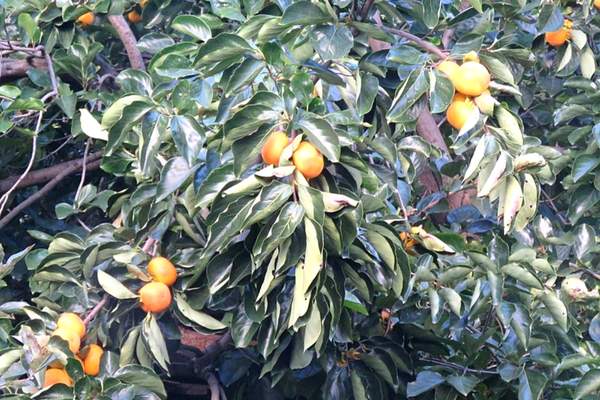
Scientific Name: Diospyros kaki
One of the fruit-bearing trees that can thrive in zones 4 to 9 is the persimmon tree. This tree is a simple, fast-growing plant that requires little care or attention. It thrives in full or partial shade, but prefers loamy, organically rich soils.
They’re famous for their bright orange fruit, which can be eaten both fresh and dried. Persimmon trees must be watered twice per week during their first year of growth and fertilized in March, June, and September for the first two years.
7. Pear
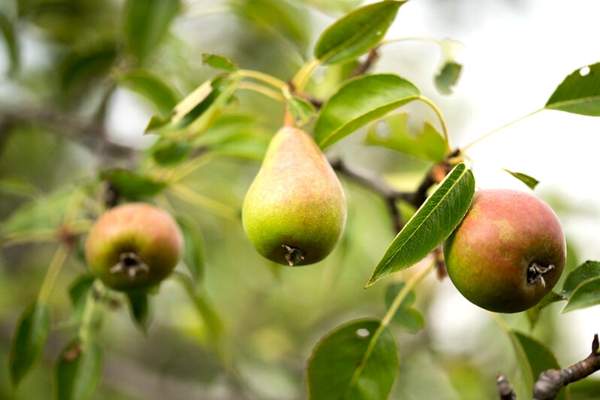
Scientific Name: Pyrus communis
Growers in USDA hardiness zone 5 should consider pear trees. They’re deciduous and can be grown in the ground or in containers. The trees can reach a height of 15 to 20 feet and produce white flowers from late February to mid-April. After that, fruits are produced from July to October.
Some pear trees can self-pollinate, while others require the pollination of other pear trees in order to bear fruit. Full sun and slightly acidic soils are ideal for pear trees. Throughout the growing season, they require regular watering, but avoid over-watering.
8. Fig
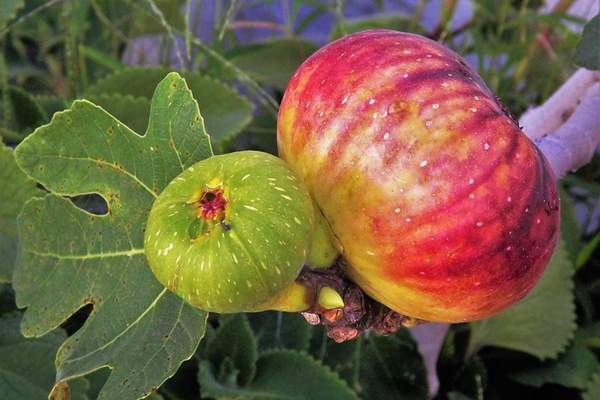
Scientific Name: Ficus carica
This Fig tree is a flowering tree that grows best in USDA zones 5, but it can also be grown in USDA zones 6 to 8. It can reach a height of 10-30 feet and has deeply lobed leaves.
They bear fruit from April to November, and it can take up to five years for them to bear fruit. During the summer and spring seasons, fig trees require full sun and fertilizer every four weeks. It would help if you also planted these trees in the spring or early fall.
9. Apple
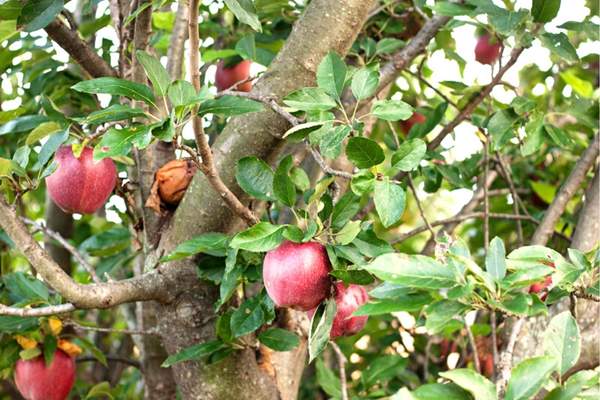
Scientific Name: Malus pumila
The apple tree grows best in USDA zone 5 and can reach 35 feet in height. It’s a deciduous tree that grows very quickly, with some growing up to 6-10 inches per year. The tree requires full sun but also good drainage.
You should plant it in an area with plenty of room for them to grow. It has pink flowers in mid-April and mid-May and bears fruit in the summer, which is usually picked in September and October.
10. Plum
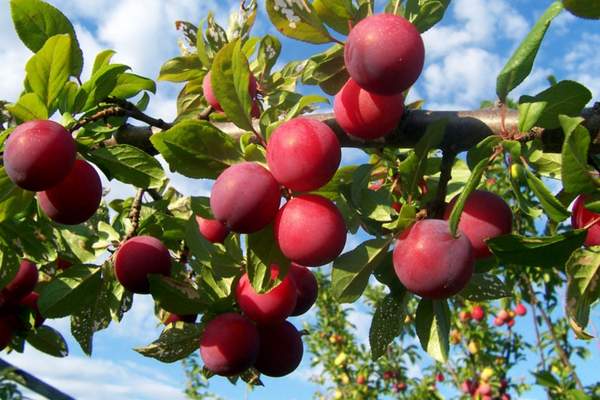
Scientific Name: Prunus domestica
The plum tree is one of the trees that’s commonly found in zone 5. Plum trees are deciduous trees that are commonly used as ornamentals due to the beautiful colored flowers that bloom in the spring. Plums have white to dark pink flowers and purple to red fruits.
This majestic tree thrives in full sun and well-drained soil. It thrives in slightly acidic soil with plenty of compost added for additional nutrients.
11. Walnut
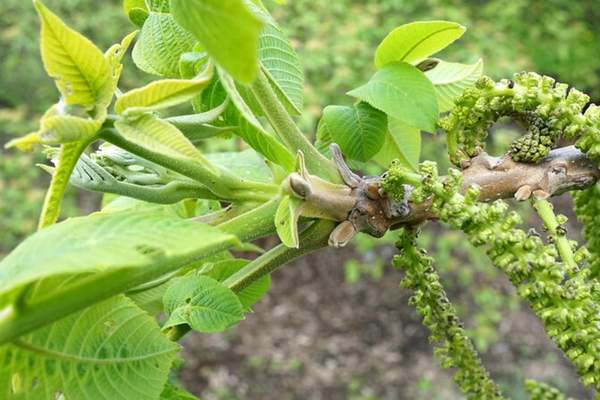
Scientific Name: Juglans ailantifolia
The walnut is a fruiting tree that you can find in most parts of the world and the variety that thrives best in USDA zone 5 is the Japanese walnut. It grows similarly to other trees and can withstand the winter cold.
It produces heart-shaped fruits called heartnut and small flowers from October to November. This tree grows well in a variety of soils, including heavy clay and light sand, and does best in full sun.
12. Crabapple
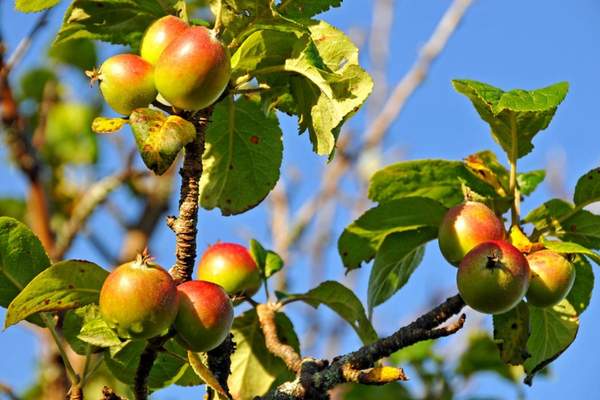
Scientific Name: Malus sylvestris
The crabapple is one of the most beautiful fruit trees you can plant in your yard. During the months of April and May, it produces white, pink, or red flowers. It can reach a height of 15 to 25 feet, but it’s usually kept smaller by pruning.
Crabapples prefer full sun for at least 6 hours per day, as well as well-drained soil rich in organic matter. They’re also self-pollinating, so only one tree is required to produce fruit.
13. Chestnut
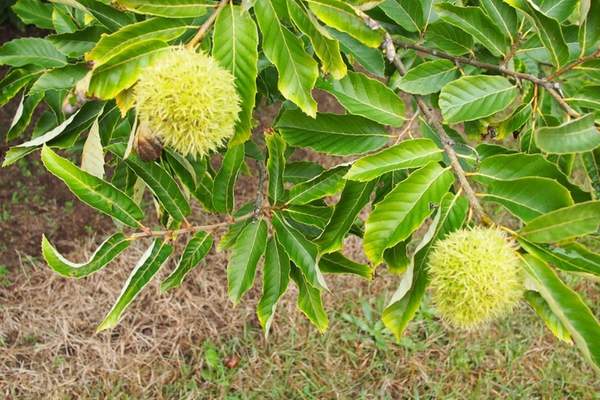
Scientific Name: Castanea mollissima
Chestnut trees are delicious fruit trees that you can plant in your yard. They grow best in USDA zones 5, but they can also be grown in zones 4 and 9.
The trees require well-drained soil and full sun, so plant them where they’ll receive plenty of sunlight throughout the day. The chestnut season lasts from mid-September to November, when the nuts ripen. After they’ve fallen from the tree, you can pick them up and consume them by roasting them in the oven.
14. Hazelnut
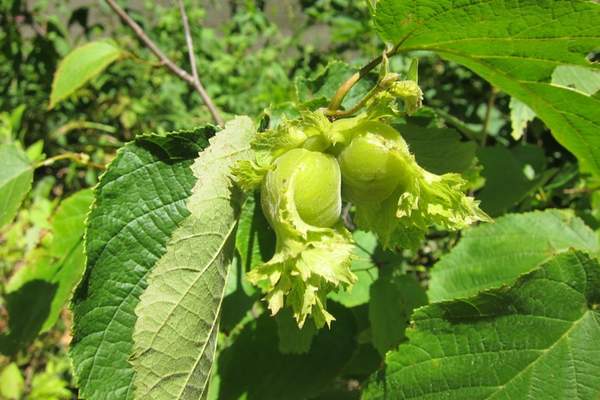
Scientific Name: Corylus americana
If you’re looking for a tree that can thrive in your USDA Zone 5 garden, consider the hazelnut. The hazelnut tree is a deciduous tree that can reach heights of 20 feet and produces small, oblong to round fruits containing nuts.
It’s hardy and simple to grow, but it does require full sun and well-drained soil. The fruits of the hazelnut tree mature in late summer to early fall and are typically harvested from late August to October.
